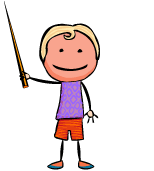Daisy International Nursery has introduced its own educational program based on 3 methods: intensive English, savoir-vivre and child’s life independence training with the use of positive reinforcement method, and Reggio Emilia approach.
 The world we live in globalizes constantly, we observe and witness the changes, the seizing of the country boarders, we are all aware of the importance of speaking the English language. For the future generation this language knowledge became a necessity.
The world we live in globalizes constantly, we observe and witness the changes, the seizing of the country boarders, we are all aware of the importance of speaking the English language. For the future generation this language knowledge became a necessity.
The best time to learn a foreign language for the brain is the time between birth and sixth year. This six year period can be divided into two periods: one from the birth till 3, the other from 3 to 6. During the first period the child obtains the knowledge of basic components and elements of the language structure, they learn the subject of speaking, how to describe activities, pronunciation, how to form questions and elementary statements and sentences. The second period between 3 and 6 is the time of widening the dictionary by increasing the amount of words used in speech. This provides a faster development of speech and communications skills that includes connoting thoughts and needs.
Our aim is for the children to learn English during playing by hearing the spoken language every day in different situations, just like it happens in their mother language. In this way they are able to learn easily and naturally . They can work on language elements like pronunciation, activity description, asking simple questions, forming simple language structures and sentence constructions.
Parents might ask themselves: My child is still little, has no knowledge about the English language and has just started to speak and communicate in his native language. Is there a point in trying to teach my child a foreign language at this early age?
In recent years plenty of research has been done on the subject of acquiring a language and speech. It has been proven that the brain is mostly active in learning a language till the age of 6. According to the results of these studies, the brain in early years focuses on communication skills, it is most productive and efficient for learning languages till the 6th year. Then, in the subsequent years the ease of learning decreases. In this early period children learn a foreign language just like their mother tongue, naturally and without any effort. The children who grow up in a bilingual environment get to know the two languages simultaneously and at the same level. We need to remember that everything that is being learned through playing in a joyful atmosphere is coded for good in the brain, everything that is tried to be remembered, memorized with difficulty is coded forcefully and not always for good. The children who get to know two languages through playing have a chance to understand, that they are able to communicate their thoughts and needs in different ways, this also widens the development of communication skills in their mother tongue.
Children at our Nursery are under care of two teachers – one of them speaks in Polish, the other teacher repeats the same spoken sentences in English – this teaching method we call the bilingual teaching method.
In this technique, when the Polish speaking teacher says „Idziemy umyć rączki”, the English speaking teacher says „Let’s go and wash our hands” – in this way children naturally learn phrases and words without even noticing it. This technique is used throughout the whole day in our Nursery. In addition to that children try to sing songs in English with their teacher, they dance to the rhythm of these songs, they learn short nursery rhymes, listen to stories, play theatre or drama. With playing, having fun dancing and singing, children learn English.
Learning through music takes a very important place in our Nursery’s intensive English education – the brain, as researchers prove, codes all the learning content easier accompanied with music. We learn with all our senses, the more of them we use during learning, the easier this process of remembering will be. Children singing a song don’t only practice the pronunciation, they also train their face muscles and strengthen them, building the phonetic base for learning foreign languages. The example here might be practicing the English TH sound.
Like all the other educational methods the intensive English learning method was prepared with special care and focus on details.
The program of learning English is prepared according to the needs and abilities of children, all educational materials are chosen according to the age, so that the kids can learn through playing.
When introducing new words children will have the opportunity to learn the pronunciation, meaning of the word and see the possibilities of using it in everyday communication, in different situations, it makes learning and remembering much easier. The next step will be to encourage the children to ask simple questions and repeating the words. With repeating the words frequently the kids will remember them better, opens an opportunity for them to use them in simple sentences.
As Daisy International Nursery, we don’t state that we will teach your children how to speak English, we can assure though, that by using the natural abilities of the young brain we will give a chance for building the foundation of the English Language , we can create a solid base, that will facilitate later education and develop .
 Daisy International Nursery wants to prepare children for future challenges – we give them the opportunity to train their social skills and everyday habits necessary in their future life. We accompany them in independence efforts, we help and support them.
Daisy International Nursery wants to prepare children for future challenges – we give them the opportunity to train their social skills and everyday habits necessary in their future life. We accompany them in independence efforts, we help and support them.
Learning independence starts when a child can stand on two feet and holds objects in their hands, which means from the early months of their life. Children at Daisy International Nursery train how to dress themselves, putting on shoes and taking them off, eating alone, gathering and organizing the toys, using the toilet, washing hands and teeth and other hygienic procedures.
We observe the development and successes of children, we find it import ant to remember about their psychological needs. To make it easier for them we use the positive reinforcement technique, that bases on praising them with words and emotional reactions, we emphasize the positive behaviors during the independence trial period. The positive reinforcement technique is used at the very moment of the behavior – „here and now” and it encourages to repeat the same behavior and to give positive feedback to the child.
The positive reinforcement provides the child with sense of security, acceptance, love and trust in their abilities. This technique is a fundament for creating positive self-esteem.
 The Reggio Emilia Approach is an educational philosophy focused on preschool and primary education. It was started by Loris Malaguzzi and the parents of the villages around Reggio Emilia in Italy after World War II. They realized that it is in the early years of development that children are forming who they are as an individual. This thought let to creation of an educational program that is based on the principles of respect, responsibility, and community, exploration and discovery in a supportive and enriching environment. Loris Malaguzzi was influenced by the educational theorists such as Maria Montessori, Jean Piaget, Lev Vygotsky. More recently, the Reggio philosophy has been influenced by Jerome Brunner and Howard Gardner , the author of the multiple intelligences theory.
The Reggio Emilia Approach is an educational philosophy focused on preschool and primary education. It was started by Loris Malaguzzi and the parents of the villages around Reggio Emilia in Italy after World War II. They realized that it is in the early years of development that children are forming who they are as an individual. This thought let to creation of an educational program that is based on the principles of respect, responsibility, and community, exploration and discovery in a supportive and enriching environment. Loris Malaguzzi was influenced by the educational theorists such as Maria Montessori, Jean Piaget, Lev Vygotsky. More recently, the Reggio philosophy has been influenced by Jerome Brunner and Howard Gardner , the author of the multiple intelligences theory.
Firstly and most importantly the philosophy recognizes the child as a rich and competent learner, children therefore should have control over the direction of their learning; Children’s rights are promoted, because according to Malaguzzi „when a child is born a citizen is born”. Children are seen as theorists who need to test out their theories - Children must be able to learn through experiences of touching, moving, listening, seeing, and hearing; Children also have a relationship with other children and with material items in the world that they must be allowed to explore.
The role of our teacher is to be a co-learner and co-researcher who stands beside the child observes and helps. Loris Malaguzzi believed that the child has „100 Languages” which means that Children should have endless ways and opportunities to express themselves. The role of the adult is to observe and listen carefully. The approach sees our children strongly connected to their families and community. An essential element of the Reggio philosophy is the use of documentation of children’s learning. We make children’s thoughts and ideas visible and preserved through notes, written observations and photographs so that we can share and discuss possibilities for development.
 Principles of the Reggio Nursery:
Principles of the Reggio Nursery:The space is arranged for the child to experience how to interact, cooperate, explore and express themselves in different ways.
Choosing the accommodation for our Nursery we showed special care for it to be full of natural light. Entries capture the attention of both children and adults through the use of mirrors, photographs, and children's work. The mirrors in the playrooms and other spaces allow the children to view, observe and explore themselves as well as the other children and surroundings. It helps them to understand their bodies and form their self based personality.
The environment is arranged to inform and engage the viewer. In each playroom there are studio spaces in the form of a centrally located atelier – corner and clearly designated spaces for group activities. The Reggio Emilia playroom with its art corner is especially designed to encourage children’s creativity.
Throughout the nursery, there is an effort to create opportunities for children to interact (the single dress-up area is in the center) Children are not divided into age groups so that they can constantly interact with each other. The nursery creates consistency and an environment where there are no added pressures to form new relationships.